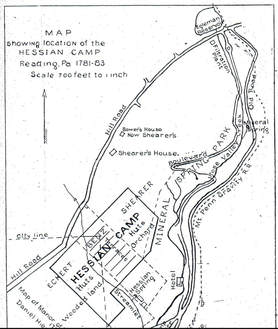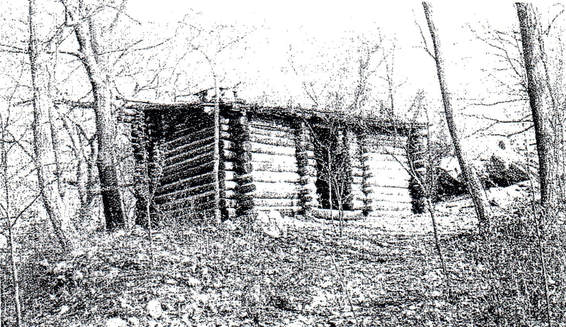History of Hessian Camp Prisoners of War in Reading PA

Hessian Camp (HC) dates back to 1781 during the Revolutionary War (April 19 1775 to September 3, 1783). HC consisted of captured German soldiers hired by the British to fight against the American colonists.
After George Washington crossed the Delaware River he captured Hessian Soldiers and brought them inland to Reading. Reading was the perfect place due to many of its citizens having German heritage and therefore being able to speak German. On August 9, 1781 they marched from the banks of the Schuylkill River to Reading. "On to a high, rocky mountain" where they settled on approximately twelve acres with over one thousand Hessian Prisoners (which equaled the population of Reading at the time) and built straw huts for shelter. Shortly after that, they were commanded to build a barracks, which in turn was a lifesaving event as all of their straw huts burned down on October 21, 1781. The HC soldiers worked hard to survive and not only did they build their own barracks, but the also planted vegetation for food on what is now known as Steuben Road. The mountain springs and woods provided them with water and fire.
In April of 1782 they allowed some of the soldiers to leave camp to go and find work throughout the countryside. Even though the men got some freedom, they needed to report back twice a month for official roll call.
After George Washington crossed the Delaware River he captured Hessian Soldiers and brought them inland to Reading. Reading was the perfect place due to many of its citizens having German heritage and therefore being able to speak German. On August 9, 1781 they marched from the banks of the Schuylkill River to Reading. "On to a high, rocky mountain" where they settled on approximately twelve acres with over one thousand Hessian Prisoners (which equaled the population of Reading at the time) and built straw huts for shelter. Shortly after that, they were commanded to build a barracks, which in turn was a lifesaving event as all of their straw huts burned down on October 21, 1781. The HC soldiers worked hard to survive and not only did they build their own barracks, but the also planted vegetation for food on what is now known as Steuben Road. The mountain springs and woods provided them with water and fire.
In April of 1782 they allowed some of the soldiers to leave camp to go and find work throughout the countryside. Even though the men got some freedom, they needed to report back twice a month for official roll call.
"Our mission is to preserve the natural and historic elements of its environs and to enrich the lives of its residents through social and philanthropic activity".

